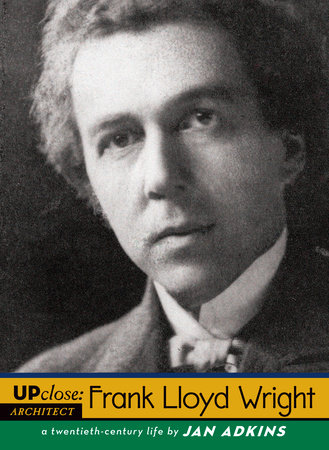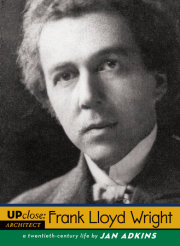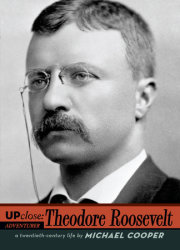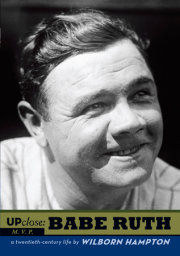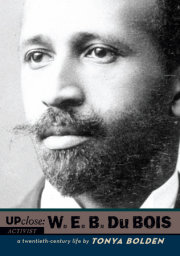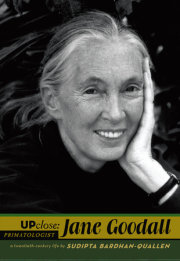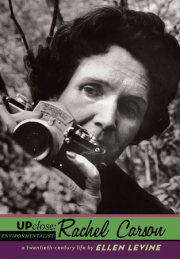• 1 •
DARKNESS AND LIGHTFRANK LLOYD WRIGHT wrote An Autobiography in 1932. A better title might have been An Invention. He disregarded the facts and reinvented his own life as a kind of fable to explain how he became so great—though at the time he had very few projects and was deeply in debt. In this fable about himself he rearranged events as he thought they shouldhave been.
In An Autobiography he tells us he was born on June 8, 1869. But the birth records of Richland Center, Wisconsin, show he was born June 8, 1867.
Wright gives us the wrong ages for his mother and father, mistakes his father’s full name, and even lies about his own name. Why lie?
Perhaps telling the absolute truth got in the way of his storyteller’s flourishes. Or perhaps he enjoyed fooling people: he took a sly delight in twisting facts.
His mother, Anna Lloyd Jones, was usually called Hannah. She was a tall, broad-shouldered woman with a plain face. Anna and her five brothers and four sisters were part of the sturdy Lloyd Jones clan. The family had come from Wales to settle and farm a Wisconsin valley with rich soil and hard winters. Like her sisters, she was a teacher.
When she was twenty-seven, close to an age when some might call her an “old maid,” she married William Carey Wright. He was forty-one. William was raising two young sons and an infant daughter after his first wife died. He was a handsome, gentle man with a powerful mind and extraordinary gifts. He taught, read poetry, sang, composed music, and played Bach, Brahms, and Beethoven on several instruments. He was a lawyer and a preacher known for his oratory, the art of making speeches.
Anna and William’s first child together was given the name Frank Lincoln Wright. “Lincoln” was a popular name in the United States in 1867: both the Wrights and the Lloyd Joneses were northern anti-slavery families, and President Lincoln, the “Great Emancipator” who freed the slaves, had been dead only two years.
Frank in 1874, age seven.
The couple had two more children together, Jane and Margaret Ellen, but by the time Meg-Ellen arrived, the Wright household had become dark and angry.
Wright’s boyhood, like the rest of his life, was checkered with patches of darkness and light, depression and happiness. What happened to his family? The twisted tales in his autobiography say one thing. The facts from records and other witnesses tell a different story. Between the two stories, we can see how upset and confused young Frank must have been.
Some family stress came from moving. William Wright shifted from place to place when he took new jobs as a music teacher or a minister in Baptist churches. Naturally, his family went with him—they went off to Iowa, Rhode Island, Massachusetts, then back to Madison, Wisconsin.
Some stress came from poverty. William was charming, intelligent, and artistic, but he couldn’t make much money. The United States was having a bad time after the Civil War; wages were low, money was tight. Preachers—even fine orators like William—were “genteel poor” who often lived on the charity of their church members. In 1878 the family returned to Madison, near Anna’s brothers and sisters in Spring Green. Relatives gave the family some welcome support. Anna’s brother James, concerned about the children, made a forty-mile wagon trip with a milk cow tethered to his tailgate so that they could have fresh milk every day.
These stresses might have been soothed, but not by Anna Wright. She had an uneasy mind and a furious temper. At first she was kind and motherly to her stepchildren but in only a few years she changed. She began to beat William’s children by his first wife and terrify them. Their aunts and grandparents were afraid she would harm them seriously. The Wright relatives took in all three of William Wright’s older children, in family homes away from Anna. William wrote to them and saw them whenever he could. Anna was glad they were gone; to her, they no longer existed.
It’s curious that Frank Lloyd Wright was nothing like his mother’s family. The Lloyd Jones brothers were big and brawny but he was small and light, so much like his father. Like William he was handsome, intelligent, witty, a natural orator and a great musician. But Frank never acknowledged his father’s heritage, not even the plain fact that William’s gifts had encouraged him to be a remarkable pianist. He never learned to read music but he had an extraordinary ear, and for the rest of his life music was an integral art of Frank’s life. But never a word about his father.
Most lives have patterns that turn up many times. Denying anyone’s influence is a pattern you can see throughout Wright’s life. Over and over he denied getting any idea, style, shape, or method from any other person. Everything came from the miraculous mind of Frank Lloyd Wright. Other architects were influenced by him, he proclaimed, but he was never influenced by them. He denied being influenced by world events or discoveries. Wright believed that he was a pure spring of original thoughts.
It’s impossible not to admire his brass certainty and loud praise of himself. No one is immune from influences, good and bad. Other artists acknowledge the influence of teachers and examples—not Frank! Consistently he claimed total originality with his rogue’s grin.
In contrast to the dark anxiety of his family home, there was the soft light of the Lloyd Jones valley. The gentle hills of Wisconsin, the growing seasons, and the clean, crisp winters delighted Wright. He fell in love with land and weather. The country rhythms of plowing, planting, tending, and harvesting became part of his philosophy.
Growing up in the Lloyd Jones valley made being close to farmland essential to Wright. All his life he was a country architect, even when he built in cities. He wanted all of us to return to our roots in the fields by making our houses and even our cities part of the forests and farms.
But he was not a happy farmer.
Frank was enchanted by the abstract beauty of nature—blossoms and sunsets—but repelled by cow dung and dirty work.
Anna, a seasoned farm girl, almost worshipped her handsome son, but feared that he was becoming too soft. In the summers she sent Frank to Brother James. (All the Lloyd Joneses were called “brother” or “sister,” and Frank continued addressing friends in this way through his life.) At Brother James’s farm, Frank’s blond curls were cut short, overalls replaced his dapper clothes. He rose at four in the summer dark to help milk the cows. He described farm work as “adding tired to tired and adding it again.”
The beauties of nature described in poetry sounded fine, but grunting hogs and clucking chickens didn’t sound as good or smell as sweet. Real life on a farm had too much sweat, blood, and dirt.
Frank tried to run away many times. The Lloyd Jones clan was sensible, tough, and content with the gritty needs of farm life. They brought him back and set him to work again.
Dark and light. Adoration from his mother, friction between Frank and his father. The tense house in the city of Madison for the winter, the beautiful valley in the summer. But this wasn’t a simple good/bad situation: the anxious winter house was a place of rest, books, and music, while the beautiful summer farm was a place of labor and long hours.
Music was a light in his boyhood and through his life. At seven he pumped the organ while his father practiced. In his autobiography Wright expands this simple chore to a cruel punishment, something like being a galley slave. But the music must have seeped into him through the organ pump handle. Wright became a gifted pianist who always had expensive (usually unpaid-for) grand pianos wherever he lived. In the narrow periods between Anna Wright’s tantrums the family would sing around the piano.
Anna was larger than her husband by several inches. There were periods of deep depression when she locked herself in her room for days. Then she flew into violent rages. She shouted at William, threw things, called him names, beat him, and eventually refused to be near him.
The Lloyd Jones clan understood that she was not a mentally healthy woman and decided on a practical, though stern, family solution: they asked William to move away. The gentle man understood that it was the best he could do for his younger children. He packed a few books and instruments and left. He did not abandon his wife and children but was sent away in deep sadness. Frank was about sixteen. A few years later William heard that Anna was accusing him of desertion. To set the record straight and protect his reputation, William asked for a legal divorce. The court agreed that Anna had abused him, and the marriage was ended in 1885.
Frank never saw his father again. Though William had been loving and kind, Frank refused any connection with him for nineteen years. William Wright died in 1904, when Frank—still stubbornly blaming his father for the family’s troubles—was thirty-seven years old. His half brothers and sister tried to contact him several times, but he saw them only once, many years later. Like Anna, Frank could erase people from his thoughts without difficulty.
In his autobiography—perhaps even in his mind—it was his father, not his mother, who had become stern and angry. No one else—not William’s friends, his other children, nor even the Lloyd-Joneses—saw him this way, yet Anna’s violent behavior was obvious to everyone. Still, the autobiography retells Anna’s tale of William deserting his family and concocts a fairy-tale reason for William’s desertion: because Anna concentrated all her attention and affection on Frank.
It’s true that Anna was obsessed by her beautiful son. She spoiled him, gave him special treats, dressed him like a young lord, and praised him constantly. An Autobiography tells us that his mother hung framed pictures of great cathedrals on the walls of his nursery so her infant son could absorb their beauty. She was determined that he would become a great architect!
The truth, once again, is less romantic. In their tiny house Frank didn’t have a nursery, and it’s doubtful if Anna hung the prints of cathedrals on any wall. Frank’s belief in the prints are probably a storyteller’s way of emphasizing his mother’s devoted attention, which was real enough.
One concrete thing Anna did for her son was encourage his interest in art. As a teacher, she had discovered the German educator Friedrich Froebel. He had devised a fine way of interesting children in graphic patterns and geometry: a system of shapes in fascinating wooden tiles-squares, triangles, circles, bars, arcs. He called them the Froebel Gifts. Anna found a set of the Gifts for Frank and also stocked his playroom with colored paper, paste, pencils, and cardboard. The shapes of those Gifts stayed with him. The pleasure of drawing seeped into his fingers. The stark beauty of geometry lodged in his eyes.
Anna stayed with Frank constantly all her life, wherever he went, seldom living more than a few hundred yards away. Her clinging, day-by-day attention never faltered. Neither did her arguments and interference. He praised his mother publicly, but she irritated and exasperated him. He let his sister Jane care for her when she was old. When she died he didn’t bother to attend the funeral.
• 2 •
FOUNDATIONS
EVERY ARCHITECT LEARNS that the first and most important part of a building’s structure is its foundation, its level and secure connection to the earth. The rest of the structure is connected to this strong base. The strength of a building depends on it.
To the Lloyd Jones clan, learning was a foundation for the future. In this, Frank was a disappointment.
Anyone could see that he was smart, and he read every book he could find. But he was a hopeless student. His grades were awful. In high school he dropped out of school repeatedly. His mother and aunts—all teachers—encouraged him to work harder. Without a good record, how could he enter a good university?
This practical logic didn’t persuade him. Most of all, following someone else’s path didn’t appeal. He was offended that teachers would tell him what and how to learn.
At eighteen Frank Lloyd Wright (he had changed his middle name to reflect his part in the Welsh clan) dropped out of high school for the last time, without graduating. His record of grades and attendance was a ruin. He had decided, however, that he was going to become an architect. Ignoring the guidelines and requirements for students at the University of Wisconsin at Madison, he entered as a “special student.” Without discipline or study skills, it was predictable that he would bomb.
In his autobiography, Wright suggests that he attended the University of Wisconsin in engineering studies for over three years, dropping out just before graduation because the degree simply wasn’t important to him.
What wasn’t important to him was the education itself. He dropped out after three semesters, little more than a year, failing in most of his classes. The only degrees Frank Lloyd Wright ever received were honorary doctorates, many years later. He entered the profession of architecture without a thimbleful of architectural education. As strange as it seems to us, his ignorance may have been a lucky break.
To understand Frank Lloyd Wright and how much he accomplished, we need to understand how architecture stood just before 1900.
Mark Twain and Dudley Warner called this period the Gilded Age. They probably meant that we were showing off to Europe that America was no longer a crude backwoods culture; however, our attempts at elegance achieved merely fake, shallow opulence. Our culture was gilded, not gold. The dress and design of the time were heavy with decoration, ruffles, details. Nothing escaped decoration—silverware, stoves, clocks, toilets. Most decoration was in the “classic” style, using symbols and themes from Rome, Greece and Egypt.
At that time architecture was also “classic.” Its forms came from antiquity. Great blocky buildings rose on American streets, unlike anything in Rome, but their surfaces were crowded with Roman columns, arches, details, and vases copied from ancient ruins.
The architecture of the late nineteenth century had rules of style, and the authority was a school in Paris, the École des Beaux-Arts. The “best” architects of Europe, Britain, and America were educated there. Their work was similar and shared a basic approach.
Most public buildings were built up in layers that represented the march of architectural fashion from Greece to Rome. The layers expressed “orders” of style. The Doric order on the bottom was the oldest and had least decoration. The Ionic order was next. It carried more decoration and its columns had capitals—sculptured forms at their tops. Above Ionic and Doric, the Corinthian order was the fanciest, its columns capped with complex sculptures of stone leaves. Designing a building like this was a problem in fitting the orders and their parts to the size and function of the structure, inside and out. A nineteenth-century architect might take great pride in adapting the style and details of ancient Roman baths in Taranto to a courthouse in Zanesville, Ohio.
For residential architecture—homes—the style book had a few more pages. In the United States some native styles had developed—the New England saltbox and Cape Cod cottage, the southwestern adobe, the sod house of the Great Plains, the “shotgun” house in the South. But these common homes were beneath the concern of society architects. They had their own list of classic styles: Greek Revival, Romanesque, Tudor, Queen Anne. Prospective homeowners chose a style that reflected their tastes or their position in society and hired architects who specialized in that style.
Most of the “great homes” in the United States were based on ancient designs. George Washington’s beautiful home, Mount Vernon, was a wooden structure designed to look like a Greek stone structure. Monticello, Jefferson’s delightful home, was designed in brick and wood using Greek and Roman features.
The theory was that architecture had reached its perfection in Greece and Rome. The best that could be hoped was that a new building would share some of the old classic grace. Architectural historians wrote about the divine harmony in classic architecture, the balance between simple forms and complex repetition of patterns.
Copyright © 2008 by Jan Adkins. All rights reserved. No part of this excerpt may be reproduced or reprinted without permission in writing from the publisher.

